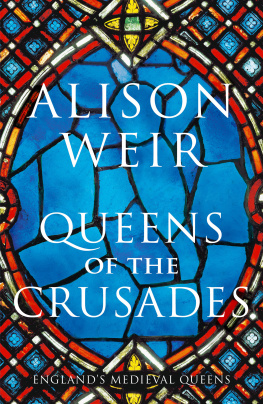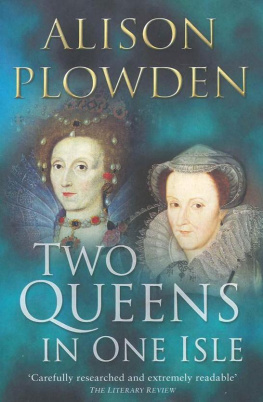First U.S. edition
Copyright 2015 by Lisa Hilton
All rights reserved
For information about permission to reproduce selections from this book, write to or to Permissions, Houghton Mifflin Harcourt Publishing Company, 3 Park Avenue, 19th Floor, New York, New York 10016.
www.hmhco.com
First published in Great Britain in 2014 by Weidenfeld & Nicolson
The Library of Congress has cataloged the print edition as follows:
Hilton, Lisa, date.
Elizabeth : Renaissance prince / Lisa Hilton.First U.S. edition.
pages cm
ISBN 978-0-544-57784-8 (hardback) ISBN 978-0-544-57785-5 (ebook)
1. Elizabeth I, Queen of England, 15331603. 2. Great BritainHistoryElizabeth, 15581603. 3. Machiavelli, Niccol, 1469-1527Influence. 4. QueensGreat BritainBiography. I. Title.
DA 355. H 56 2015
942.05'5092dc23
[B]
2015004340
Cover design by Martha Kennedy
Cover image: Burghley House Collection, Lincolnshire, UK/Bridgeman Images
Author photograph Guy Isherwood
v1.1115
To my daughter, Ottavia
Princes have mysterious spirits and properties, unknown to all others.
THOMAS CROMWELL
List of Illustrations
A NNE B OLEYN , c. 153336 (black and colored chalks on paper), by Hans Holbein the Younger (1497/981543). Royal Collection Trust Her Majesty Queen Elizabeth II, 2014/Bridgeman Images
T HOMAS W YATT , c. 153537 (colored chalks with pen and ink on paper), by Hans Holbein the Younger. Royal Collection Trust Her Majesty Queen Elizabeth II, 2014/Bridgeman Images
The Family of Henry VIII, c. 1545 (oil on canvas), English School (16th century). Royal Collection Trust Her Majesty Queen Elizabeth II, 2014/Bridgeman Images
E LIZABETH I when a princess, c. 1546 (oil on panel), attributed to William Scrots (fl. 153753). Royal Collection Trust Her Majesty Queen Elizabeth II, 2014/Bridgeman Images
M ARY I, 1554 (oil on oak), by Hans Eworth (fl. 152074). Society of Antiquaries of London, UK/Bridgeman Images
E DWARD VI when Prince of Wales, 1546 (oil on panel), attributed to William Scrots. Royal Collection Trust Her Majesty Queen Elizabeth II, 2014/Pictorial Press Ltd./Alamy
R ICHARD II, 1390 (oil on panel), by an unknown artist. Westminster Abbey, London/akg-images/De Agostini Picture Library
E LIZABETH I, c. 1600 (oil on panel), English School (16th century). National Portrait Gallery, London, UK/Bridgeman Images
T HE C LOPTON P ORTRAIT OF E LIZABETH I, c. 156065 (panel), English School (16th century). Private Collection. Photograph Philip Mould Ltd., London, UK/Bridgeman Images
Elizabeth I and the Three Goddesses, 1569 (oil on panel), attributed to Hans Eworth or Joris Hoefnagel (15421601). Royal Collection Trust Her Majesty Queen Elizabeth II, 2014/Bridgeman Images
W ILLIAM C ECIL , 1558 (oil on canvas), English School (16th century). IAM/akg-images
P HILIP II OF S PAIN , c. 1553 (oil on canvas), by Titian (c. 1488/901576). Galleria Palatina, Palazzo Pitti, Florence akg-images/Nimatallah
R OBERT D UDLEY , E ARL OF L EICESTER , c. 15571609 (drawing on paper), by Federico Zuccaro (15421609). The Trustees of the British Museum
N ICCOL M ACHIAVELLI , second half of 16th century (oil on canvas), by Santi di Tito (15361603). Palazzo Vecchio, Florence GL Archive/Alamy
T HE P ELICAN P ORTRAIT OF E LIZABETH I, c. 1574 (oil on panel), by Nicholas Hilliard (15471619). Walker Art Gallery, National Museums Liverpool/Bridgeman Images
I VAN IV THE T ERRIBLE (color woodcut), by Hans Weigel (fl. 1577). Bibliothque des Arts Dcoratifs, Paris/Archives Charmet/Bridgeman Images
M URAD III, 1808, by John Young. Heritage Image Partnership Ltd./Alamy
M EHMET III (oil painting on panel), after Cristofano Dell Altissimo (c. 15251605). National Trust
The tomb of B ATTISTA C ASTIGLIONE in St. Marys Church, Speen. Photograph Peter Orr
H ENRY L EE , 1568 (panel), by Anthonis Mor (1517/2076/7). National Portrait Gallery, London, UK/Bridgeman Images
F RANCIS W ALSINGHAM , c. 1585 (oil on panel), attributed to John de Critz the Elder (c. 15521642). World History Archive/Alamy
F RANCIS , D UKE OF A NJOU , late 1560s, French School (16th century). Heritage Image Partnership Ltd./Alamy
M ARY S TUART , c. 1560 (oil on panel), follower of Franois Clouet (c. 151072). Victoria & Albert Museum, London, UK/Bridgeman Images
T HE A RMADA P ORTRAIT OF E LIZABETH I, c. 1588 (oil on panel), attributed to George Gower (154096). Woburn Abbey, Bedfordshire, UK/Bridgeman Images
E LIZABETH I in old age, c. 1610 (oil on panel), English School (17th century). Corsham Court, Wiltshire/Bridgeman Images
The signature of E LIZABETH I on a letter to Lady Southwell, 15 October 1598. Rex/Nigel R. Barklie
Authors Note
Elizabethan spelling is notoriously whimsicalI have generally modernized where it seemed necessary for clarity. And William Cecil, Baron Burghley, ought properly to be referred to as Lord Burghley from 1571, but somehow has remained Cecil, as that was how I thought of him for four years.
Introduction
B ETWEEN 1569 AND 1603 , a painting by the Dutch artist Joris Hoefnagel was seen by the thousands of visitors who streamed through the court of Elizabeth I at Whitehall. They came to admire, to solicit, to petition, to intrigue. Some, it was said, came for love, and others, it was also said, came to murder. All were conscious of the presiding presence of the mysterious and magnificent ruler of England, the nations second Queen Regnant, Great Harrys daughter, Elizabeth herself. But when they stood beneath Elizabeth I and the Three Goddesses, what did they see?
This first known allegorical portrait of Elizabeth is a product of the Protestant diaspora of the mid-sixteenth century. Ten years into the queens reign, her contentious (and, by Elizabeth herself at least, somewhat resented) position as the figurehead of religious reform across Europe had already transcended her role as monarch of what was then the small, impoverished island kingdom of England. The artist was a refugee from the Netherlands, where reformist rebels were locked in conflict with the Catholic power of Spain. In choosing to display Hoefnagels picture so prominently, Elizabeth was making a powerful statement about her conception of herself as a ruler, a statement which relied on its viewers ability to interpret the classical visual language of the picture. To contemporaries then, seeing the picture properly required both an understanding of Elizabeths place in the confessional politics of Europe and the capacity to filter that understanding through the new learning which had revolutionized European thought over the preceding centuries. Put simply, it is a Renaissance picture, and it depicts a Renaissance prince.
The painting is a rendition of the Judgment of Paris, in which Elizabeth, holding her orb and scepter, faces the three goddesses Juno, Minerva, and Venus. Juno, the Queen of Heaven, holds her hand to the skies, expressing the endorsement of Elizabeths judgment by God. The attributes of the three deitiesa scepter, a quiver of arrows, and a sheaf of roseslie on the ground, uniting the rival goddesses in their defeat by Elizabeth, who has reconciled their respective qualities of intellect, power, and beauty. Elizabeth is cast in the male role, as Paris, whose award of the prize in the ancient worlds most lethal beauty contest to Venus brought about the Trojan War. One myth surrounding the foundation of the kingdom of Britain attributes it to Aeneas, one of the few inhabitants of Troy who escaped Greek devastation. So history might suggest that Elizabeth/Paris had not only reconciled the qualities of the three goddesses, but in doing so, had followed Aeneas in refounding her nation, battered yet triumphant after a great conflict.
Next page
















